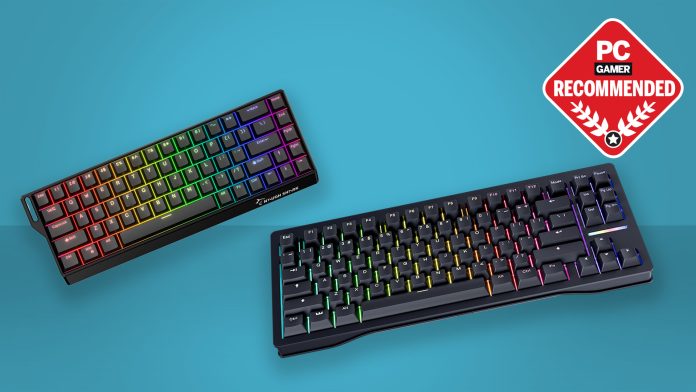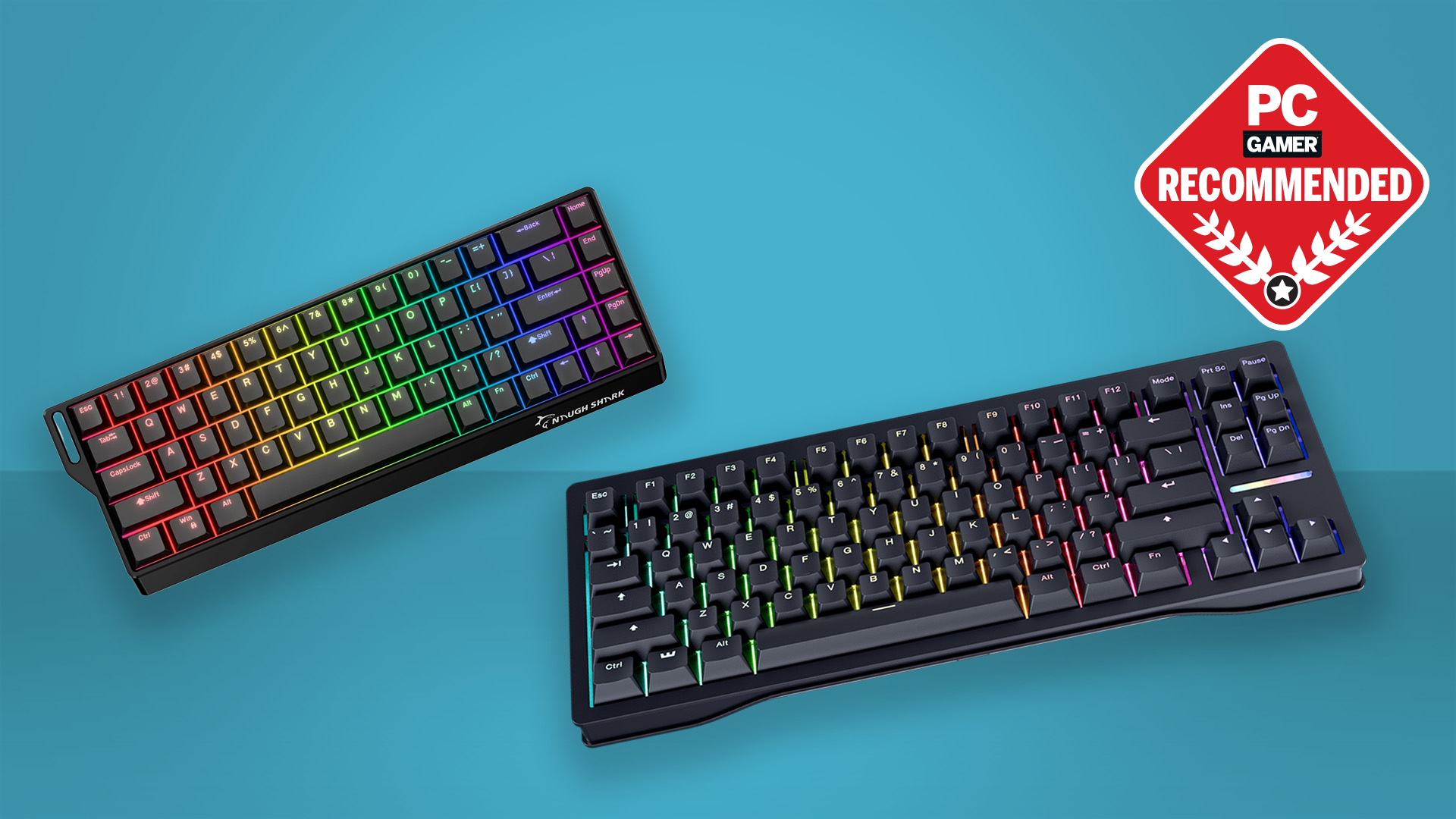
The best Hall effect keyboards offer the speediest switches money can buy. They turn your real-world actions into lightning fast reactions in-game, but there’s more to them than just that. Faster response times are only one feature on what are highly customisable, often analog, switches, and deliver special abilities to gamers not possible on mechanical gaming keyboards.
Razer, SteelSeries, Corsair and more all have options available using Hall effect switches—or in some cases, optical or induction (read more on the differences here). But the best? That accolade goes to the Wooting 80HE. It’s fast, sure, but it stands head and shoulders above the rest for its ease of use and excellent application, the wonderfully-named Wootility.
If you don’t have the budget spare for the 80HE, we recommend the Gamakay X NaughShark NS68. It’s affordable, while still offering many of the features we’ve come to expect from high-end gaming keyboards. As for wireless Hall effect keyboards, those exist, and we’ve a few more picks in the guide below…
The quick list
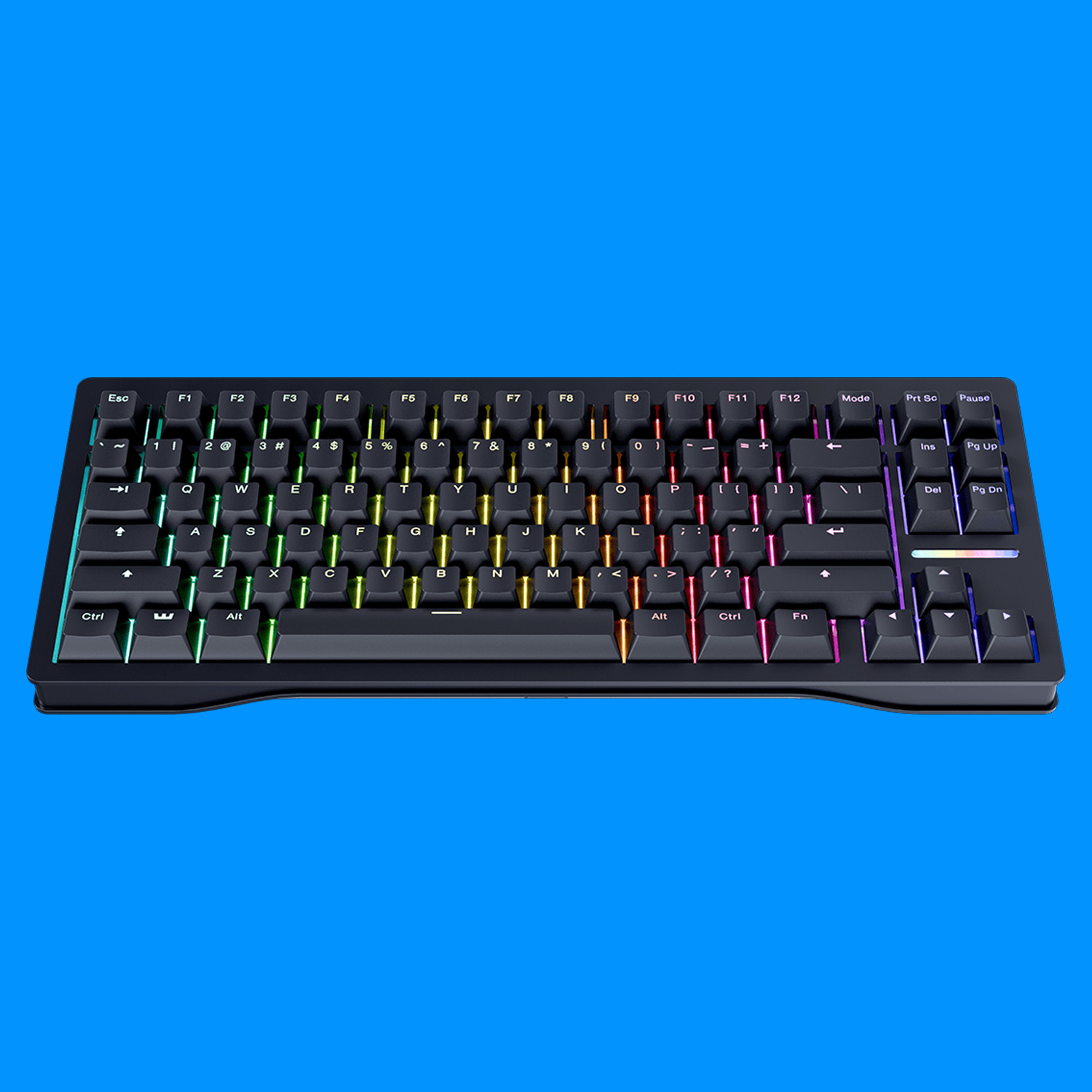
The best overall
The best way into Hall effect keyboards is the Wooting 80HE. The company behind it popularised the technology and that shows in how extensive yet easy to use its software is. The 80HE itself is slick and speedy, with an LED bar to boot.
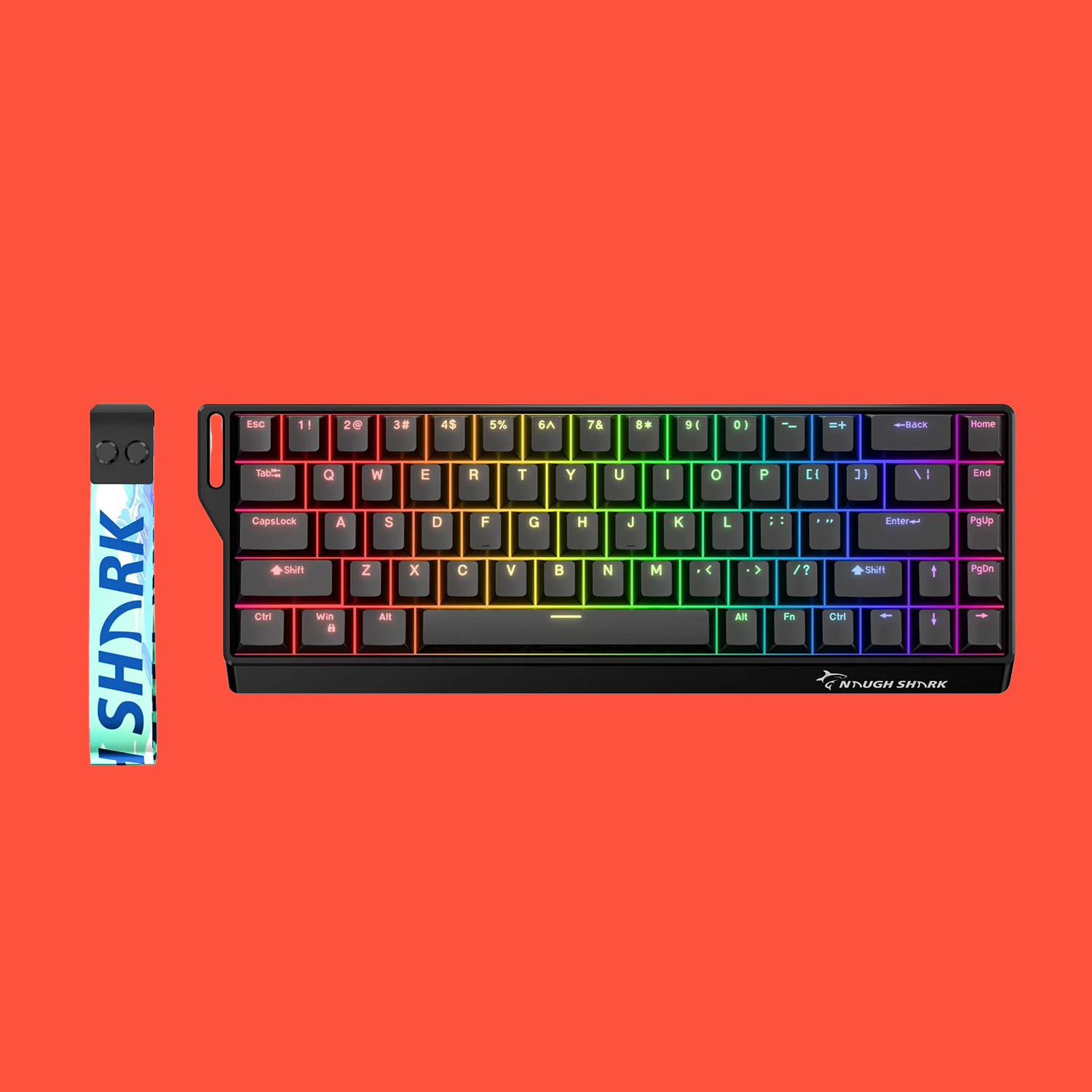
2. Gamakay X NaughShark NS68
The best budget
If you want to save some pennies, the Gamakay X NaughShark NS68 is your best bet. It has all the features and flexibility of a Hall effect keyboard in a cheaper chassis, allowing for a significant price reduction compared to some.
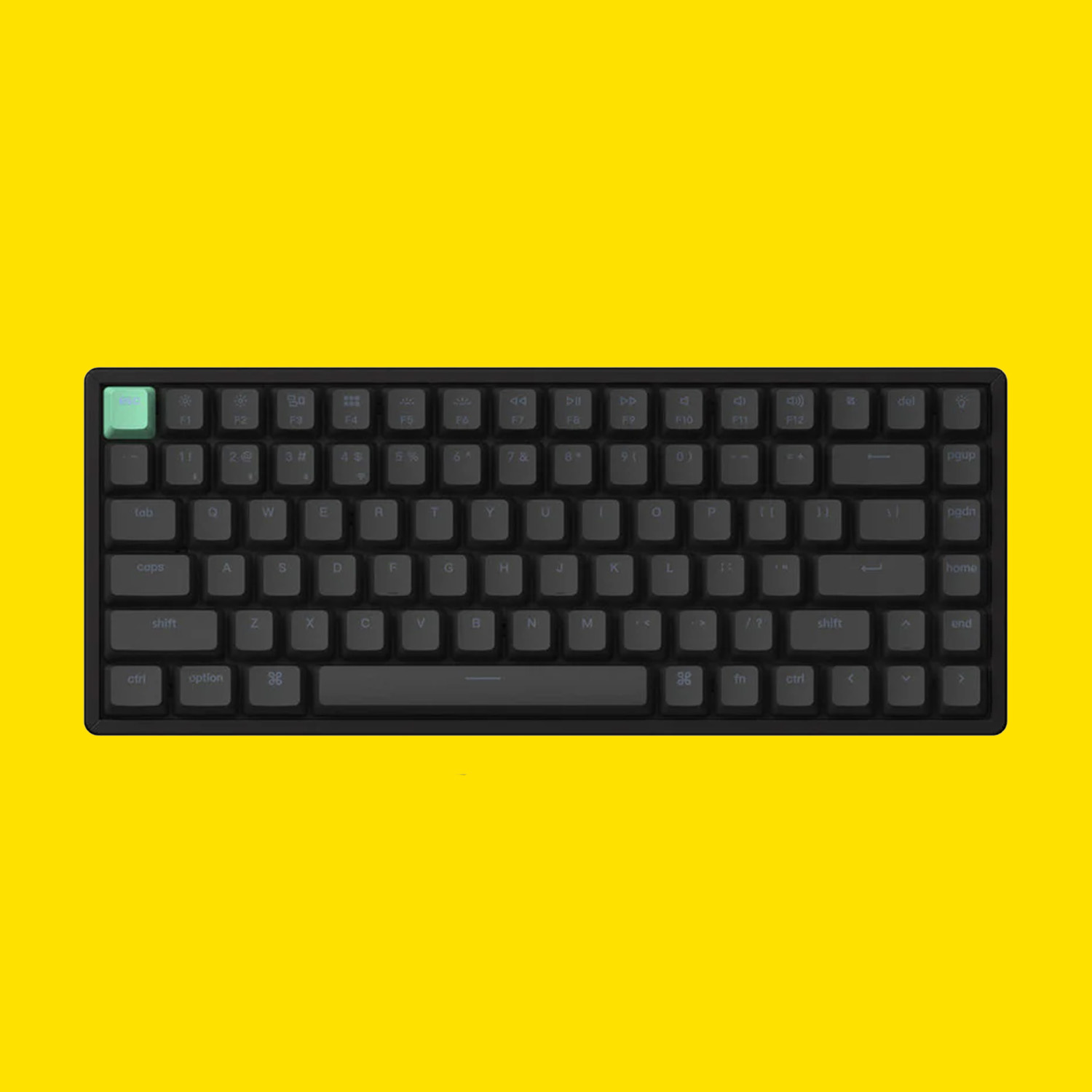
The best wireless
Keychron is an emerging name in gaming keyboards, having launched a heap of affordable units with high-end features. The K2 HE is prime example, offering wireless Hall effect for a fraction of the price of the competition.
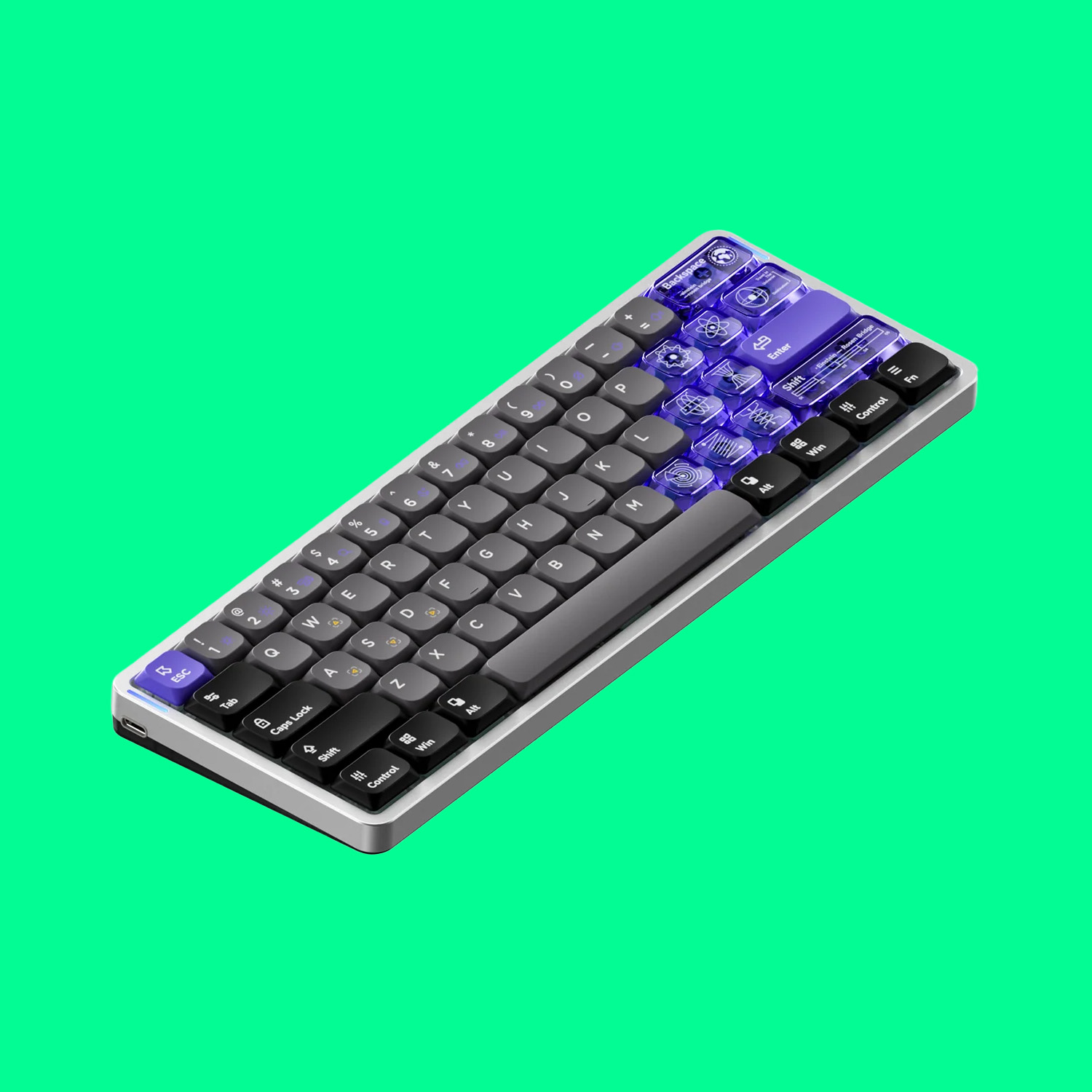
The best low profile
The NuPhy Air60 HE is something a bit special, combining both low profile and Hall effect switches into one well-priced gaming keyboard. It’s definitely worth a look.
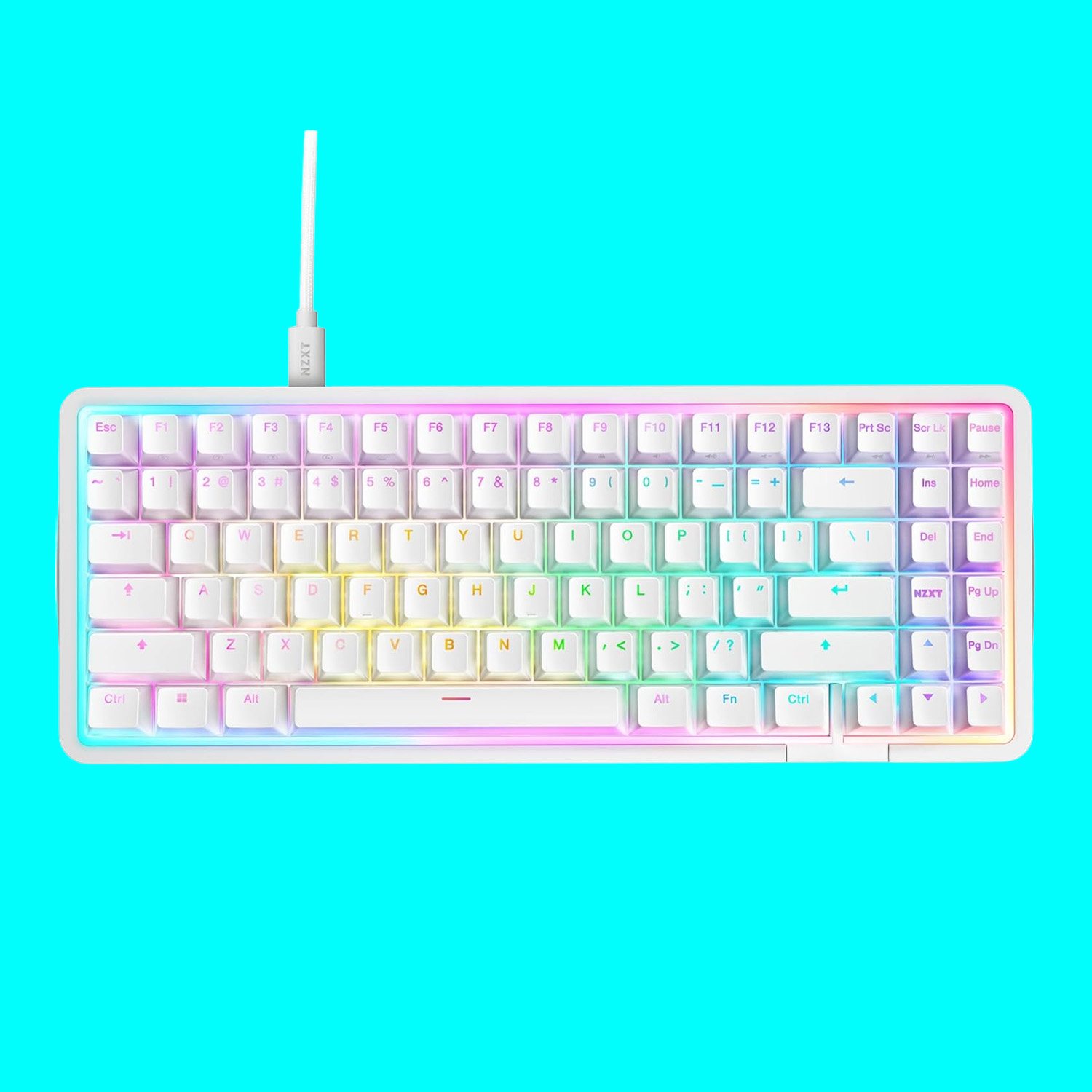
5. NZXT Function Elite MiniTKL
The best looking
NZXT has put together a very impressive keyboard in the Function Elite. It feels great, has the perks of Hall effect, and it looks superb. Well, if you’re into RGB lighting, anyways.

The best with a numpad
The Keychron Q5 HE has something rarely seen in Hall effect keyboards: a numpad. If you’re hoping to dual-wield your keyboard for gaming and work/school, this is a great pick.
Curated by…

Jacob has been writing about gaming keyboards for nearly a decade now, and in that time has had hands-on experience with more than he’d care to count. He also tested the first optical, analogue gaming keyboards as they arrived on the market, and has watched the technology develop into Hall effect. He’s tested a whole lot of them since then.
The best Hall effect keyboard
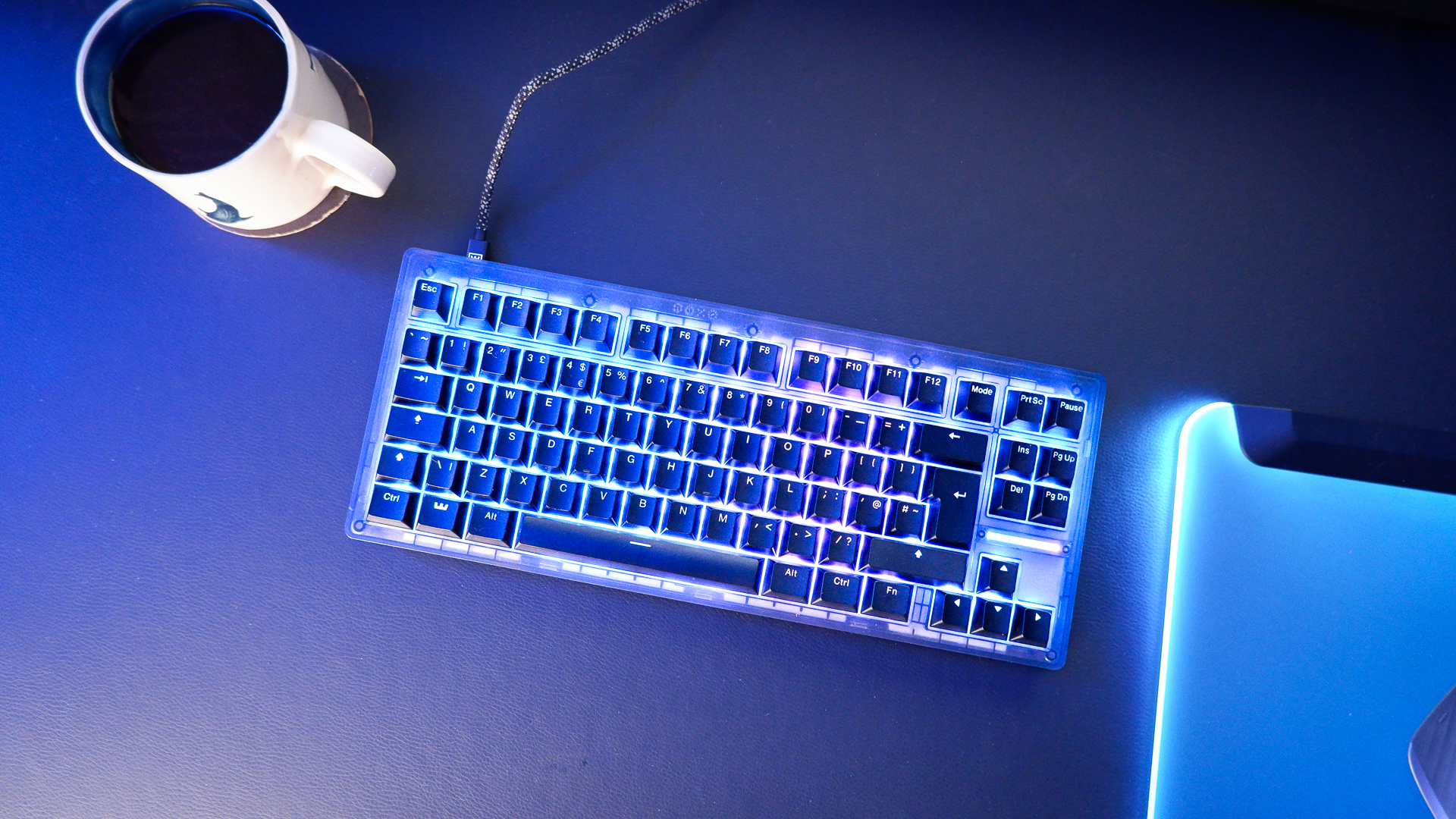
The best Hall effect keyboard
Specifications
Switch: Wooting Lekker60 V2
Technology: Hall effect
Size: 80%
Backlights: Full per-key RGB
Dedicated media controls: None, programmable shortcuts
Wireless: No
Reasons to buy
+
Hilariously powerful Hall effect switches
+
Meaner looks
+
Lightweight, web-based software
Reasons to avoid
–
Chassis has some flex
Buy if…
✅ You want ease of use: Wooting’s secret weapon isn’t so much the keyboard itself (though it is great) but rather its software, the Wootility. It’s by far the easiest to use, especially if you want to switch between multiple profiles depending on your game.
Don’t buy if…
❌ You want a tough chassis: The Wooting uses plastic for the most part, and while you can buy fancier chassis for the smaller 60HE model, you’re most likely going to stick with what’s provided on the larger model. And that’s plastic.
The best Hall effect keyboard is the Wooting 80HE. It’s a little extravagant for its see-through chassis and light bar, but not in a garish way like some. Though what it really stands out for is its excellent software—software really matters when it comes to making the most of your Hall effect switches.
The Wootility. Whoever came up with the name must be very proud of themselves, though the whole team behind it gets a pat on the back for how it works. It’s by far the easiest software to use as a newcomer to analog/rapid trigger keyboards and offers full tooltips, diagrams, and even highlights important on-screen information to help explain each of its many varied functions. It can also be downloaded or used as a web-based interface to get rid of any bloat on your system.
Most of all, the Wootility delivers easy access to profiles. At the press of a dedicated key on the keyboard, you can switch between your pre-made profiles in the Wootility. This simple functionality makes all the difference. You can set-up a couple of profiles that use the quickest actuation modes, rapid trigger, and high speed polling and switch to them when you boot up your game of choice. When you’re using the keyboard day-to-day for typing, perhaps for work or school, you can switch to a more sensible profile that avoids mistypes.
Once set-up, this keyboard flies. The Lekker V2 switches in combination with the PBT or ABS keycaps are a little wobblier than some of the competition, but the 80HE has come on leaps and bounds compared to its predecessors. It feels great for typing but more importantly slick and responsive for gaming. That’s where it comes into its own. Give yourself some time to learn the ropes and this keyboard comes alive in a competitive shooter.
The Wooting 80HE also supports full analog mode, which essentially turns your humble key switches into a full controller-like analog input, which is tough to get used to but can be useful for racing games or gradual movement.
It should come as no surprise that Wooting has nailed the tech here. It was the company that popularised the whole concept, and rightly has managed to make a name for itself ever since. New features are regularly being added to the software, unlocking new abilities for the keyboard, and it’s planning to release a couple knobs that can replace one or four switches for further customisation.
There’s a small LED bar above the arrow keys on the Wooting that can show how far you’re depressing a key, or which profile you’re using, or just light up in whichever color(s) you prefer.
It’s simply a slick keyboard with a lot of customisation options within easy reach of most.
It’s worth noting that I grabbed the Wooting, and the other keyboards in this guide, for seperate testing outside of their initial reviews. I ended up coming back to the Wooting after using the rest because of its slick software. It’s still my go-to Hall effect keyboard to this day. Our reviewer didn’t come to the same conclusion, as Reece felt the plastic chassis wasn’t quite as good as others around. I do agree there, but it doesn’t bother me nearly as much, hence the recommendation here.
Read our full Wooting 80HE review.
The best budget Hall effect keyboard
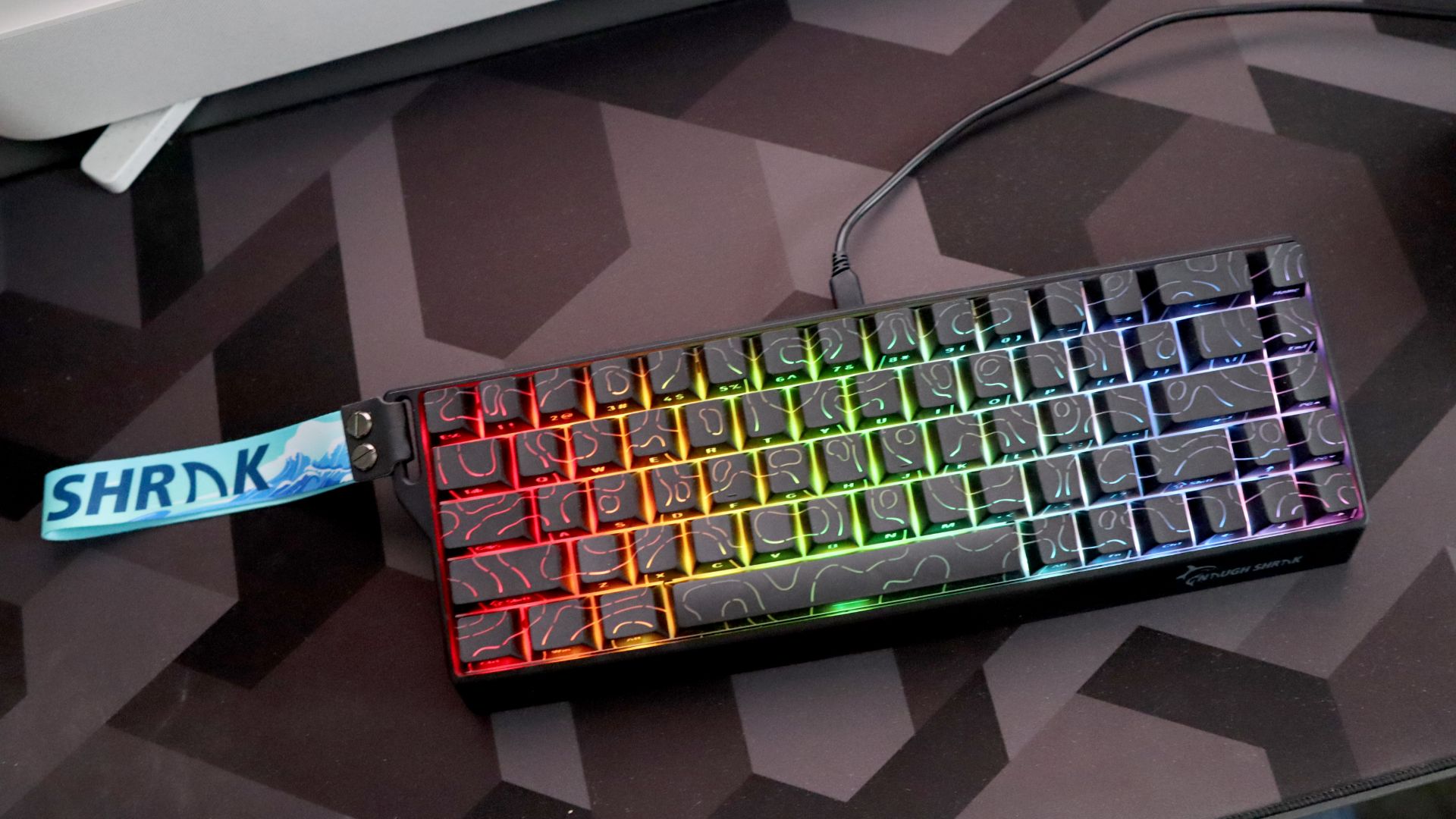
The best budget Hall effect keyboard
Specifications
Switch: Outemu Peach Magnetic
Technology: Hall effect
Size: 68%
Backlights: Full per-key RGB
Dedicated media controls: None, programmable shortcuts
Wireless: No
Reasons to buy
+
Immensely powerful Hall effect switches
+
PBT keycaps at this price are excellent
+
Potent software options
Reasons to avoid
–
Lightweight plastics used in construction
–
Software’s UI is a tad clunky
Buy if…
✅ You want cheap and cheerful: The Gamakay x NaughShark NS68 really redefines what is budget for Hall effect keyboards by being so gosh-darned affordable.
Don’t buy if…
❌ You want a high-quality case and top-notch typing feel: The Gamakay is a lot of things, but high quality in terms of the materials, it is not.
The best budget Hall effect keyboard is the Gamakay x NaughShark NS68. When I say budget, I mean budget, too. You might be surprised to hear that it costs as little as $40, occassionally less, and still provides all the benefits of Hall effect.
There are clear differences between a budget keyboard and a high-end one, notably in the construction of the keyboard’s chassis and the switch feel. Though I’ve been impressed by the NS68. It does feel cheaper than a Wooting or NZXT, but it’s not the shoddy plastic construction you might expect from something that costs so little. It’s pretty solid, if a little light and hollow.
Though it delivers the important stuff: Outemu Peach Magnetic switches, harnessing Hall effect, and 8000 Hz polling. This polling rate is slightly lost on me, I have to say, as it’s tough to tell the difference, but if you’re after the absolute fastest keyboard around, there’s no harm in switching it on for a little peace of mind while gaming. This way, you can’t blame your tools when you end up a few rounds down in Valorant.
The RGB lighting across this 68% keyboard is controllable via the software. You’ll also find features such as rapid trigger and dynamic keystroke to enable at your discretion here. The software is a little half-baked compared to some, and a lot so versus the Wootility, but it’s serviceable.
The 68% layout offers a few more keys than a 60%, though it is more or less strictly for gaming nonetheless. You are missing a few things to get down to this sorta size, including, of course, the numpad. It also takes its style from Wooting’s popular 60HE keyboard, offering a small strap on the top left corner for… hanging it on your belt? I don’t know, it looks kinda cool and is pleasing to fiddle with.
There’s a lot to like here, and for the money, I can easily overlook the stuff I don’t like. Even as a stop-gap solution to greater things, the Gamakay x NaughShark NS68 works a treat, though here’s hoping it stands the test of time nonetheless.
Read our full Gamakay x NaughShark NS68 review.
The best wireless Hall effect keyboard
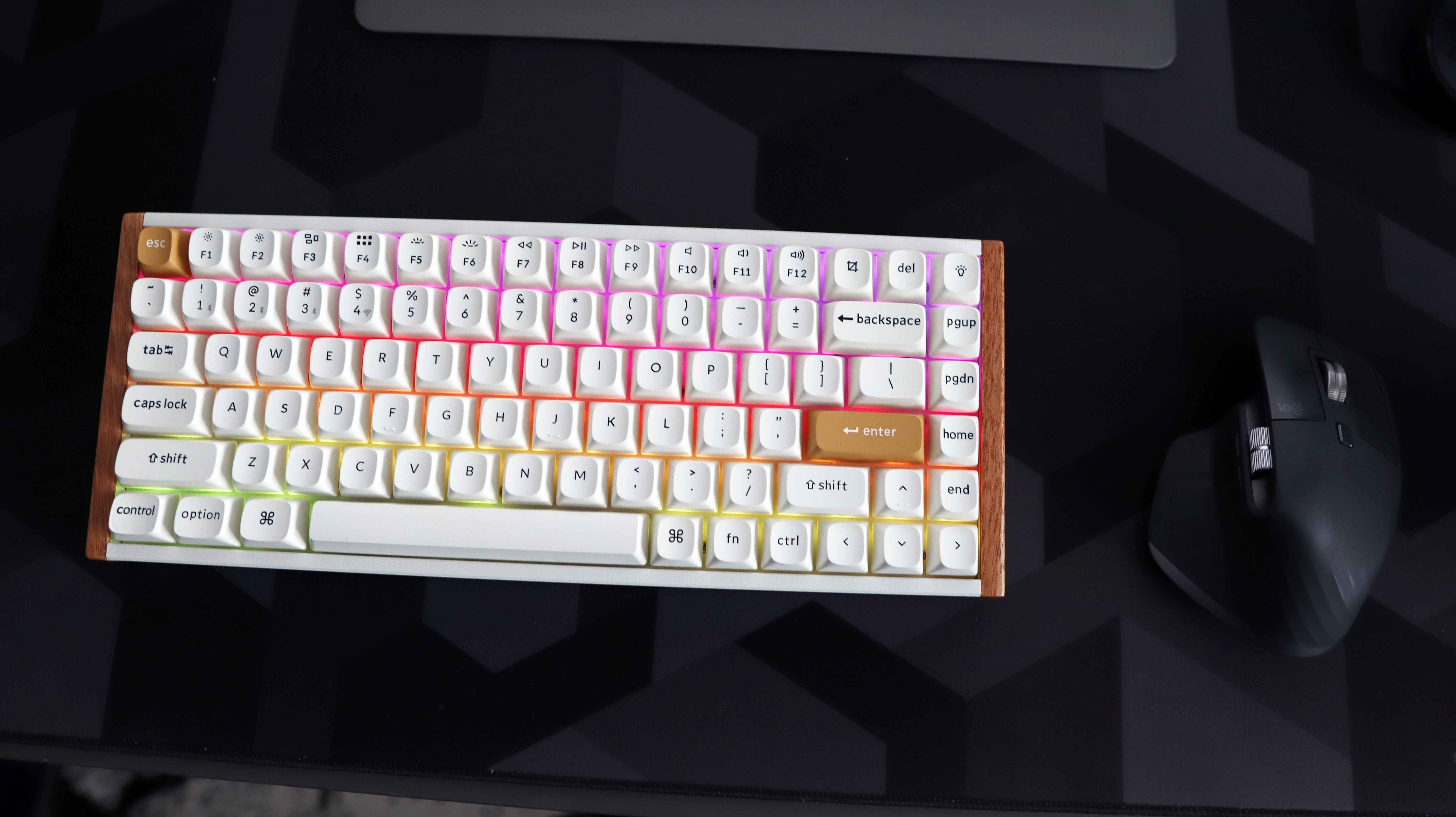
The best budget Hall effect keyboard
Specifications
Switch: Gateron HE Double Rail
Technology: Hall effect
Size: 75%
Backlights: Full per-key RGB
Dedicated media controls: None, programmable shortcuts
Wireless: Yes
Reasons to buy
+
WOOD!
+
Responsive and smooth HE switches
+
Excellent battery life
Reasons to avoid
–
Lighting effects are a tad basic
Buy if…
✅ You want wireless freedom: Hall effect keyboards first launched with high power demands and an incompatibility with going cable-free. Though we’ve since seen a few offering wireless ability, such as this Keychron.
Don’t buy if…
❌ You want the best software: Keychron’s Launcher software is pretty good, though does fall short compared to the Wootility.
The best wireless Hall effect keyboard is the Keychron K2 HE. We’ve rated plenty of Keychron keyboards highly over the past few years, as the company burst onto the scene, and especially so for value for money. But the K2 HE has earned our recommendation for both its wireless operation and quality build.
Underneath its pretty exterior, the K2 HE uses Gateron HE Double Rail switches. These are surprisingly stable and offer no real key wobble, which is a big benefit over some Hall effect keyboards, especially older ones, that have more than we’d like. They’re responsive and pre-lubricated for a smoother actuation.
It’s certainly the fanciest-looking Hall effect keyboard, what with the wood on the edges and all. It wins some style points there. Though it also includes RGB lighting across the keys, controllable via the Launcher software.
The Launcher software is a web-based configurator, so no need to download anything. In it, you can set your actuation settings, between 0.5 mm and 3.8 mm; remap keys; and change your lighting. Of course, it also offers other features for the Hall effect switches, such as rapid trigger and what Keychron calls Snap Click, which essentially prioritizes the keypress you press down the furthest for snappier response in-game.
The Keychron K2 HE, like the Wooting 80HE, also supports analog mode for controller-like inputs.
With both a dedicated 2.4 GHz connection and Bluetooth, it can be used freely across a range of devices and with a focus on minimal latency on the former. It’s only rated to 1000 Hz, but that’s more than enough for most (if not all). As for the battery, Keychron rates it to up to 110 hours without any lighting enabled, though even with it on, you can get away with a full couch gaming session without worrying about it turning off mid-game.
Altogether, a quick and affordable Hall effect keyboard without the price premium usually attached to wireless operation. Plus, it looks smart and feels great in hand.
Read our full Keychron K2 HE review.
The best low profile
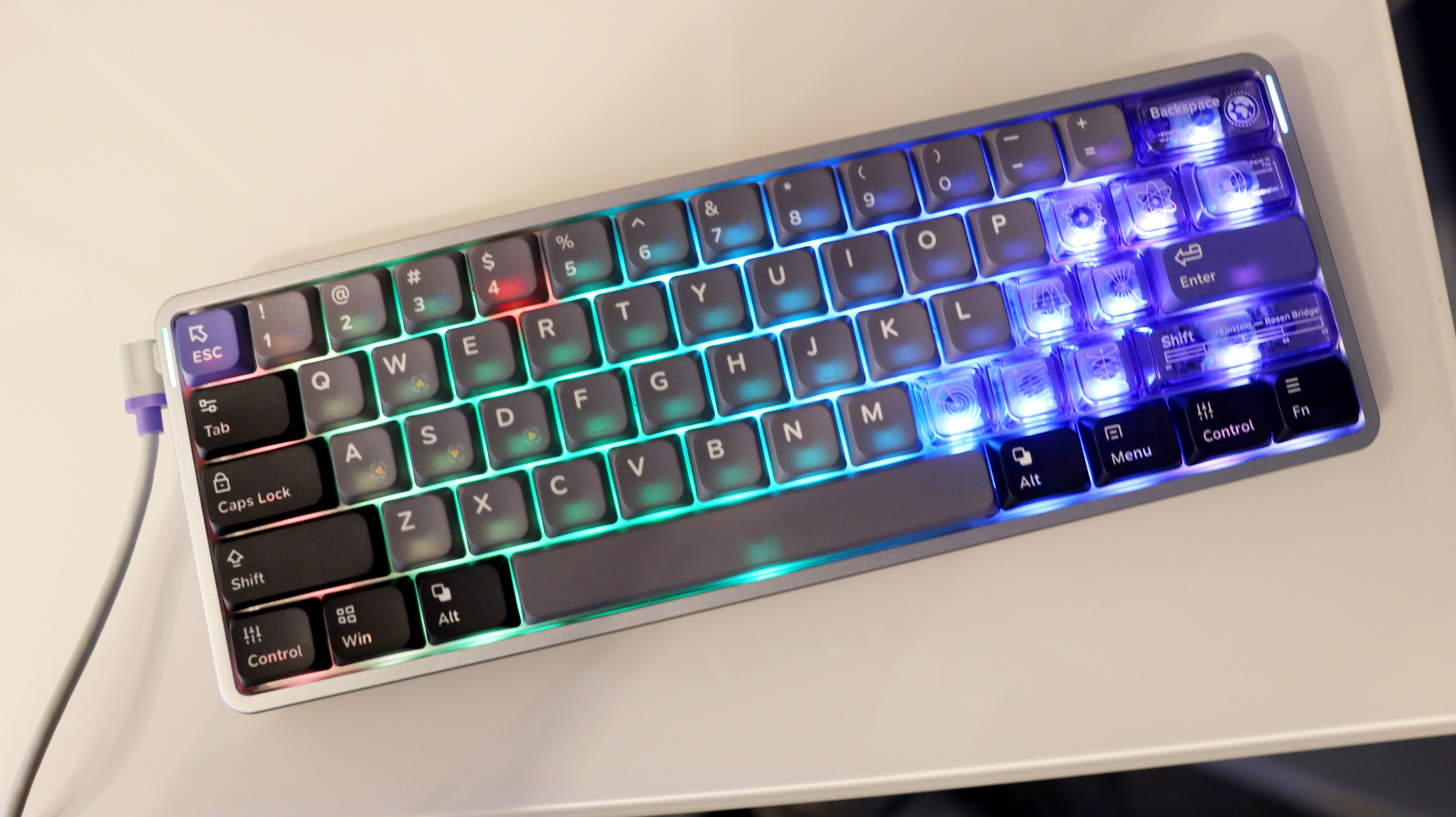
The best low profile Hall effect keyboard
Specifications
Switch: Gateron Low Profile Magnetic Jade Pro/Jade
Technology: Hall effect
Size: 60%
Backlights: Full per-key RGB
Dedicated media controls: None, programmable shortcuts
Wireless: No
Reasons to buy
+
Funky design is, well, funky
+
Ridiculously brisk low-profile HE switches
+
Seemingly endless software customisation
Reasons to avoid
–
Purely wired connectivity may not be enough for power users
Buy if…
✅ You prefer a small, short keyboard to rest your fingers on: The compact 60% frame leaves plenty of room surrounding the NuPhy Air60 HE for your mouse or simply if you’re using it on a small desk, but the low profile switches all make for less bending at the wrists.
Don’t buy if…
❌ You need more keys for school or work: This compact chassis is great for gaming, but mostly just for gaming, unless you’re a real power user and like to macro every shortcut yourself.
The best low profile Hall effect keyboard is one of very few to offer sub-standard height keys: the NuPhy Air60 HE. But it doesn’t get this accolade on merely existing alone, it’s also a very capable product that’s good value for money for the competitive gamer.
This NuPhy is unlike any other Hall effect keyboard, in that it launched as the world’s first with these specialised switches and a low-profile design. That’s a pretty good claim to fame.
If you’re looking for a low-profile keyboard and have a reasonable budget to spend, this is absolutely the one to go for. It’s replaced the ROG Falchion LP as the best around for us—the Falchion LP doesn’t have HE switches anyways—as it’s extremely quick, affordable, and has tons of software customisation thanks to those clever switches.
This isn’t a one-trick pony. It’s low-profile, customizable, and extremely fast. It has a 0.1 mm actuation setting, lower than some others with similar Hall effect switches, and, for what it’s worth, can be set to an 8000 Hz polling rate. That said, I’ve never noticed the difference between the usual 1000 Hz and 8000 Hz. Guess my synapses don’t fire quick enough.
You can tweak the keyboard to your liking within the web-based NuPhy.io configurator, much like others on this list. It has a lot of options to get through, though you could set up a few simple shortcuts and tune your actuation height and be done with it as a basic set-up.
It comes with translucent keys to the right-hand side of the keyboard, which it somehow gets away with. I dare say it looks good, though it might not be to everyone’s tastes. It’s extremely compact with a 60% layout and little bezel around the extremities. Great for competitive gaming, though you might want to look elsewhere for a productivity machine—it requires using the function key a lot to get to the lesser-used keys not present on this board.
It’s good for so much, and for such a good price, a lot of what it offers on top of the basics feels like a freebie.
Read our full NuPhy Air60 HE review.
The best looking Hall effect keyboard
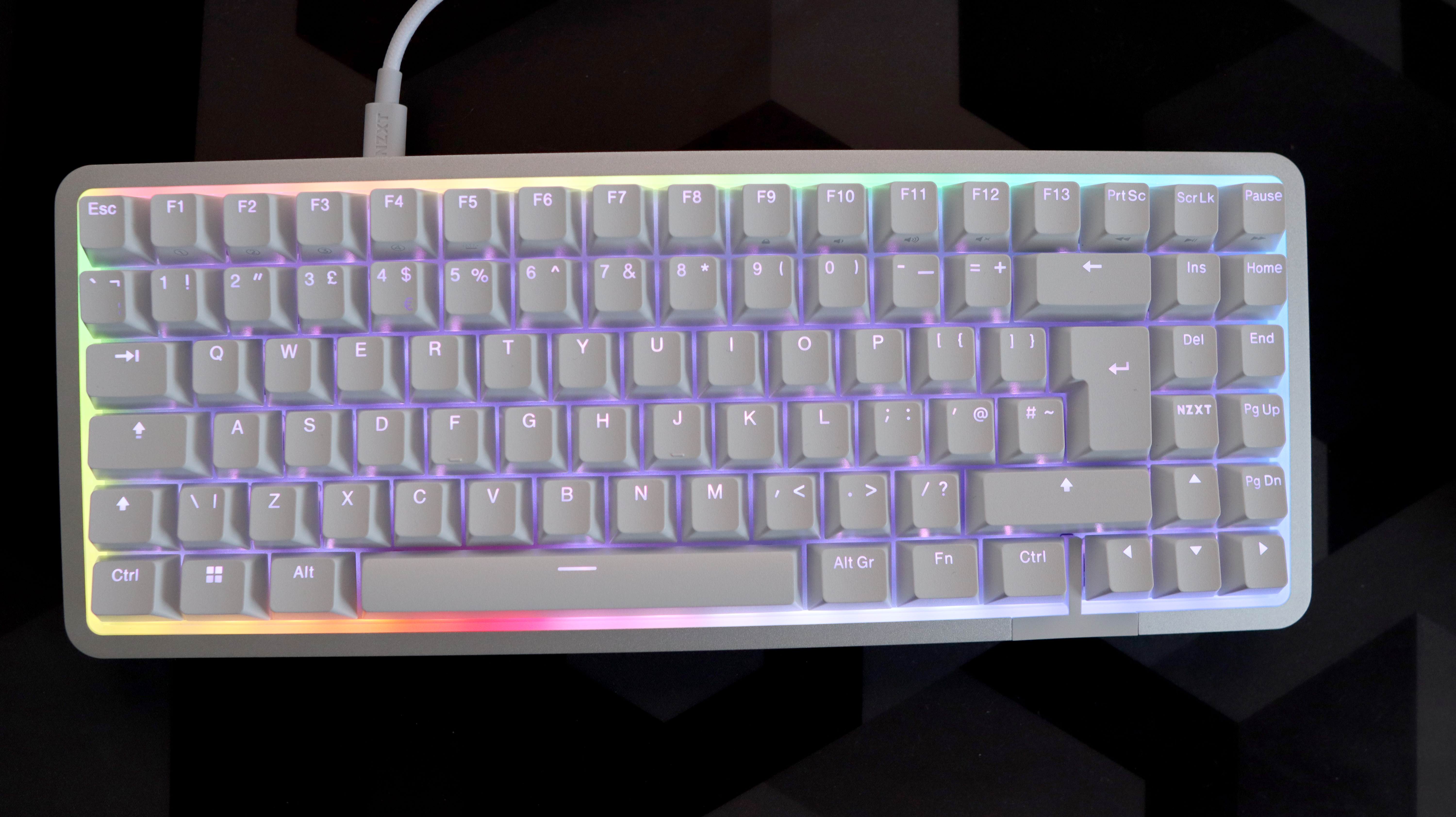
The best looking Hall effect keyboard
Specifications
Switch: NZXT Dual Rail Adjustable Magnetic
Technology: Hall effect
Size: 75%
Backlights: Full per-key RGB
Dedicated media controls: None, programmable shortcuts
Wireless: No
Reasons to buy
+
Smart and stylish in white
+
Powerful HE switches with rapid trigger
+
Simple and easy software configuration
Reasons to avoid
–
Purely wired connectivity may not be enough for power users
Buy if…
✅ You want style: You don’t have to sacrifice performance for style here, the Function Elite has both. Though if you wanted understated, you might want to look elsewhere.
Don’t buy if…
❌ You want Hall effect with none of the frills: You could spend less and get similar features, though the cost of the Function Elite seemingly has no floor right now. It keeps getting reduced.
The best looking Hall effect keyboard is the NZXT Function Elite MiniTKL. On balance, function trumps form, but when you can get both a gorgeous design and plenty of features in a single package, we can make exceptions.
The Function Elite MiniTKL has everything you might hope for in a Hall effect keyboard. Rapid switches, adjustable actuation, rapid trigger, a feature using a confusing combination of the words ‘Snap’ and or ‘Tap’, and even an 8000 Hz polling rate.
What it also does extremely well is package all those features together into a positively pretty package. The white version most of all, as the vibrant RGB backlighting beneath the keys glows through the legends on the PBT keycaps and around the edges of each key. The perimeter of the keyboard houses 45 LEDs for even more illumination than most.
Even without the LEDs enabled, it looks great. The case is made of CNC aluminum and while it leaves little room for media keys or a numpad, it does offer a little more room for a few extra keys and a full function row. More than your average mini keyboard, anyways.
It looks the part of a custom build in many ways. Though it’s more affordable than many. One of our complaints with the keyboard at the time of our review was it offered a similar feature set to others in the market for a little more cash, though those days are well and truly over now. I’ve even spotted this keyboard on sale for as little as $100—practically half price.
Controlled via the NZXT CAM application, I’ve had my misgivings with the app in the past but I was pleasantly surprised to see plenty of customisation that’s easy to get to grips with when I gave the Function Elite a try myself.
While it is still true you can buy cheaper Hall effect boards, such as the Gamakay Naughshark, the Function Elite feels a much more premium unit, and it’s not even close. It’s great if you’re looking to color-match your desktop or PC, or looking for something to show off with a little more than others in this guide.
Read our full NZXT Function Elite MiniTKL review.
The best Hall effect keyboard with a numpad
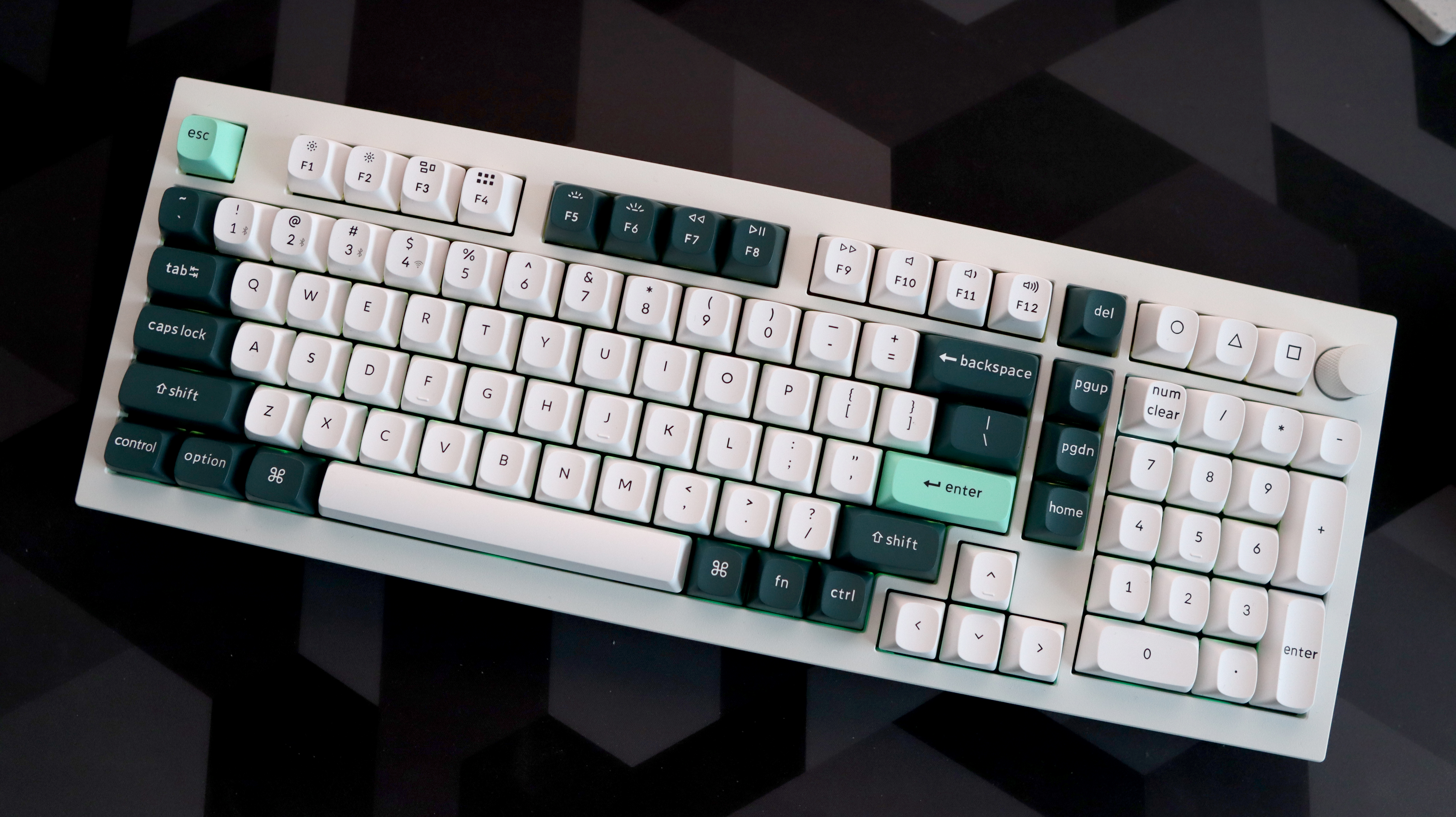
The best Hall effect keyboard with a numpad
Specifications
Switch: Gateron HE Double Rail
Technology: Hall effect
Size: 96%
Backlights: Full RGB (no shine through)
Dedicated media controls: Dedicated, programmable keys and dial
Wireless: Yes
Reasons to buy
+
Snappy Hall effect switches
+
Wonderfully sturdy
+
Lightweight, web-based software
+
Numpad!
Reasons to avoid
–
Not as fast as other esports-grade boards
–
Quite pricey
Buy if…
✅ You want one keyboard for every occasion: This is understandable, right? Not everyone is buying a keyboard just for gaming, that’s a real luxury, and if you want the best of both, the Keychron Q5 HE offers it.
❌ You don’t want to spend top dollar: The Q5 HE demands a kingly sum for its varied ability. It’s not the most expensive keyboard around, but it’s not cheap, either.
The best Hall effect keyboard with a numpad is the Keychron Q5 HE. This isn’t quite a full-size board, but it’s probably our preferred layout at 96%. That means it has all the keys you could ask for but squished into a tidy form factor.
If you plan to use the same keyboard for both work and gaming (most of us, I imagine), you might want to consider a larger unit with the full complement of keys. But you don’t have to lose out on the more important Hall effect features for gaming to do so: the Q5 HE offers the full range.
It uses the same switches as the K2 HE, Gateron’s Double Rail, which means it supports adjustable actuation down to a 0.2 mm sensitivity, which only requires the lightest press to register a key press. Similarly, it supports rapid trigger and multiple actions for a single key press (this takes some getting used to). All can be customised to your liking in the Keychron Launcher web application.
What’s more, like the K2 HE, it’s wireless with both 2.4 GHz and Bluetooth connectivity. The battery is rated to 100 hours, though you’ll need to disable the lighting to get the most juice out of it. That’s not such a big deal, as rather than shine through keycaps, the Q5 HE only offers rear lighting purely for looks alone. You won’t see your keys as well in the dark, which is a bit of a miss, but the board looks great with the colorways on offer.
The case is made of CNC aluminum here, which not only looks great, means it doesn’t slide around oin your desk or suffer any flex. It also feels like a premium product that’s worth the money you’ve spent on it, which is a considerable amount, truth be told.
The many layers beneath the keys and the thick case help create a very satisfying clunk to every key press—a solid thock, some might say.
A great mix of work and play, the Keychron Q5 HE offers a bit of everything for a modern gamer with other things to do. It does cost more for that wider functionality, but it’s very much a one and done purchase.
Read our full Keychron Q5 HE review.
Also tested
FAQ
What are the benefits of using a Hall effect, or analog, gaming keyboard?
Mechanical switches have long been the de facto choice for gaming keyboards, owing to their reliability, snappy response, and tactile feel. These switches are either on or off.
In recent years, however, we’ve seen the emergence of other switch technologies, such as Hall effect, but also optical and induction keys, that offer much wider functionality. These allow for a key to register whether a key is on, off, or somewhere inbetween. Think of it like the difference between the A, B, X, Y buttons on a controller and the triggers—the face buttons are binary, akin to mechanical switches, the triggers are analog, much like Hall effect (and they’re often using Hall effect or Tunnel Magnetoresistance sensors these days).
Initially, gaming keyboards using these new kind of switches aimed to use them to imitate analog movement, ie allowing a switch to be used like something akin to a controller’s triggers or analog sticks. While this is possible on some keyboards today, such as Wooting’s 80HE, it’s no longer the primary reason to buy a Hall effect keyboard. Rather, that’s in the many clever ways these switches can be used in game.
Here are a few of the common uses for Hall effect and similar key switch technologies:
Rapid trigger – Rather than resetting the key at a set point in the movement, rapid trigger adjusts the reset point to wherever the key is in the travel when you release it and depress it again. Essentially, it cuts out the lag between pressing and releasing a key.
Adjustable actuation – You can define the actuation point, the point at which the key registers a key press, to be at a point of your choosing on Hall effect keyboards. Exactly how much you can fine tune this is up to the keyboard you purchase, but most offer something between 1 – 3.5 mm—1 mm being incredibly sensitive—if not a greater range than that.
Dynamic keystroke – This allows you to set multiple key actions per key, depending on how far you depress the key. It takes some getting used to, especially if you’re applying as many as four actions to a single key press.
What’s the difference between Hall effect, optical and induction switches?
All aim to provide similar feature sets to gamers, though there are a few differences to note:
Hall effect uses magnets to register how far a key has been pressed. It has the benefit of being widely offered by many manufacturers, bringing down costs, and being very flexible in its use.
Optical uses light to register how far a key has been pressed. The first wave of analog keyboards used optical switches, but many moved to Hall effect thereafter. Razer still evangelizes optical as the best pick for pro gamers, however, claiming it’s the most consistent and precise.
Induction uses a ferrous matel in the switch and registers how far a key has been pressed using sensors mounted on the PCB. The benefit of this is that ferrous metals are easier to produce in a consistent fashion compared to magnets, and in theory can reduce power consumption. Ducky’s One X is the only gaming keyboard with these switches today, and it’s not amazing, but Cherry has big plans for induction switches in motion, though less on the gaming front.
TMR is an emerging technology that operates similarly to Hall effect but claims more consistent and precise operation. It’s mostly used in controllers, and only a handful right now, but there is at least one keyboard using it today.
What is this SOCD or Snap Tap I keep hearing about?
SOCD, last key priority or some combination of the words ‘snap’ and ‘tap’ is a feature that’s not actually exclusive to Hall effect or similar keyboards, though it was popularised by Razer and Wooting on their clever keyboards. It’s essentially a feature that allows for two keys to be pressed at the same time but only one key’s input to be registered by a system. It’s extremely useful for counter strafing in games like CS2—so much so, in fact, that the public outcry over its use led to Valve banning players using it.
Thing is, SOCD can be implemented in the games themselves, at a software level, or in your keyboard, and doesn’t actually require any fancy key switches. When game developers don’t want it to be used in their game, however, trying to get around that with your keyboard can lead to the ban hammer coming crashing down on your head. My advice: leave it off.
